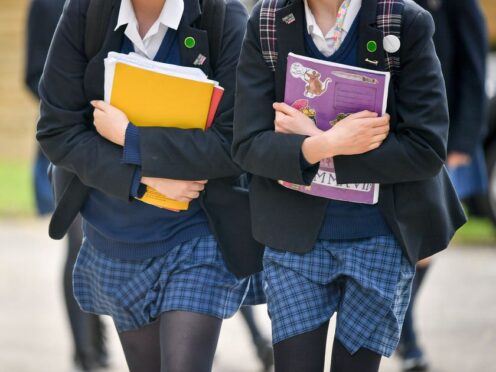Labour’s pledge to limit the number of branded items of school uniform and PE kit will “cost parents more” as children will demand expensive sports brands instead, a schoolwear industry boss has warned.
Matthew Easter, chairman of the Schoolwear Association, said further restrictions on the number of branded items that schools required could create “inequality in school” and drive up costs as young people put pressure on their parents to buy alternative clothing from brands such as Nike or Adidas.
The Labour Party’s manifesto, published ahead of the General Election in a fortnight, has pledged to “bring down the cost of school by limiting the number of branded items of uniform and PE kit that schools can require”.
But Mr Easter from the Schoolwear Association, which represents manufacturers, suppliers and retailers of school uniform, said the policy would have a “negative impact” on schools, parents and pupils.
He also warned that further restrictions would “decimate” the schoolwear industry and a lot of small retailers “would not survive”.
Mr Easter told the PA news agency that Labour’s policy created a number of “unforeseen consequences” as it opened up competition amongst children and reduced the “social levelling” factor which uniform provided.
He said: “We strongly feel that it will result in costing parents more rather than less because of pressure from their children to buy branded items, which are a lot more expensive and don’t last as long as school uniform items.”

Schools have told the association that they are more likely to reduce the number of branded school sportswear items over daywear.
Mr Easter said: “What happens is the kids then pressure their parents to go and buy Nike or Adidas or another fashion sports brand and the cost goes up massively, and then you create inequality in school where some kids have Nike and some kids don’t. There’s the ‘haves’ and ‘have nots’.”
In September, Labour pledged to strengthen existing statutory guidance in an effort to reduce the burden on families struggling with the cost-of-living crisis.
Under proposals, announced by the party at the time, parents would only have to buy a maximum of three branded items of uniform and PE kit.
But this level of detail is not in the Labour Party’s manifesto, which only commits to limiting the number of branded items of uniform and PE kit schools require.
Statutory government guidance on uniforms, which came into effect in autumn 2022, already tells state schools in England to keep branded items to “a minimum” and to limit their use to “low-cost or long-lasting items”.
Mr Easter said some schools had decided to no longer require school branded items for PE following the guidance, but had since reintroduced these items as there were negative consequences.
He told PA: “They realised what they’ve actually done is increased the cost to parents. By giving latitude to go and buy anything, kids say ‘I don’t want to wear that. I’m only going to wear this. My friends wear the Nike product therefore I’m going to wear that as well’.
“The kids almost sort of choose their own ‘uniform’. But it is not the school brand, it is another brand and that introduces all sorts of inequality.
“We are really concerned that further restrictions on the number of branded items as an arbitrary measure could be a major problem for schools.
“In trying to do the right thing of reducing costs to parents, it will actually have the opposite effect because the cost of garments increases, the quality goes down, so you get less use out of them.”
But Jason Elsom, chief executive of charity Parentkind, said it was “ludicrous” to say that school uniforms could not be simplified without the risk of some families buying branded products.
He said: “It’s time to go back to basics so that social levelling can take the form of a well-fed family in a warm home.
“No child will remember the branded sports top they didn’t wear, but they will be scarred by memories of their mum going without food or the long winter evenings freezing in their bedroom.”
Research published by The Children’s Society charity last year found parents were still spending “exorbitant amounts” on school uniforms despite changes introduced to keep costs down.
Parents and carers of secondary school children were paying on average £422 per year on uniforms, and around £287 for primary school children, it found.
Bridget Phillipson, Labour’s shadow education secretary, said: “Costs have rocketed, with uniform prices for secondary school pupils increasing by a quarter in the last three years alone.
“Branded items are driving price rises which are making children poorer not smarter.
“Labour will toughen rules to limit the number of branded items of uniform or PE kit which can be required.”
